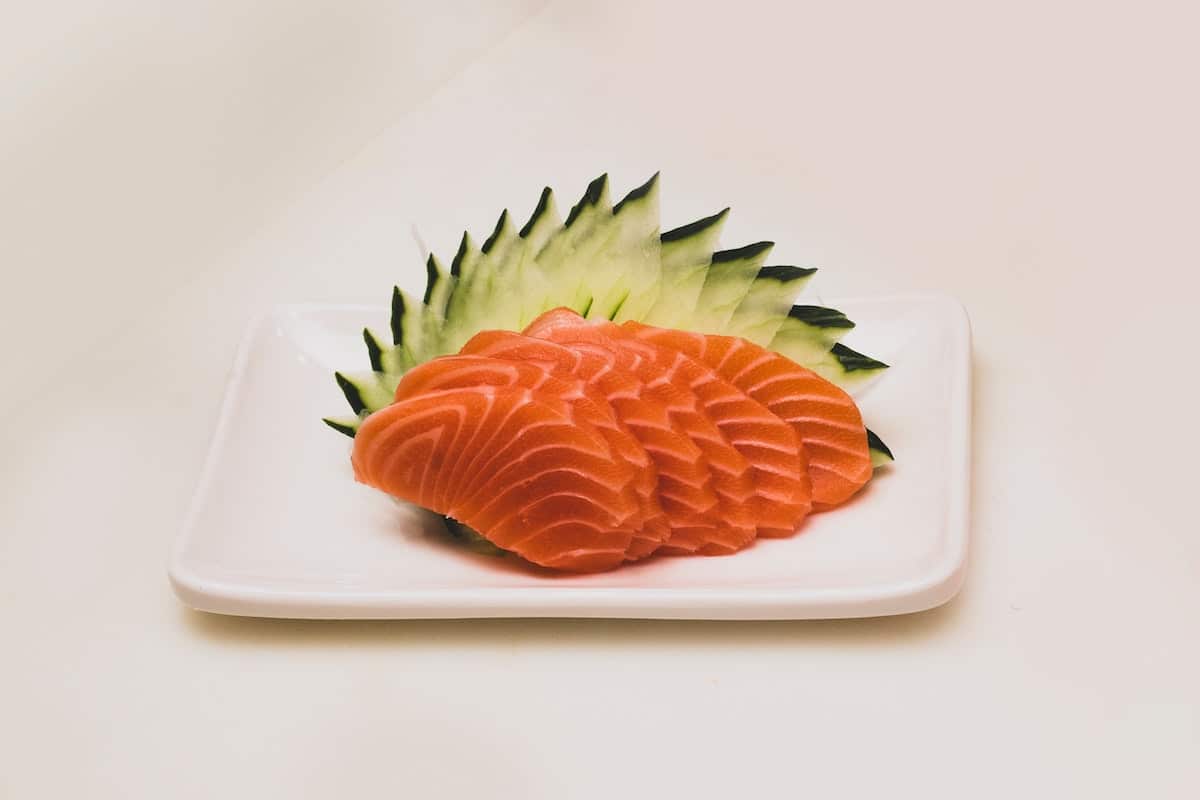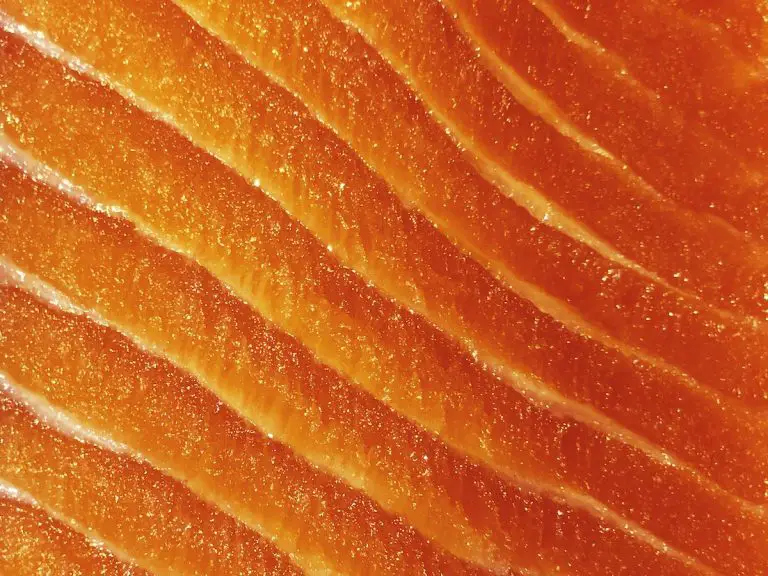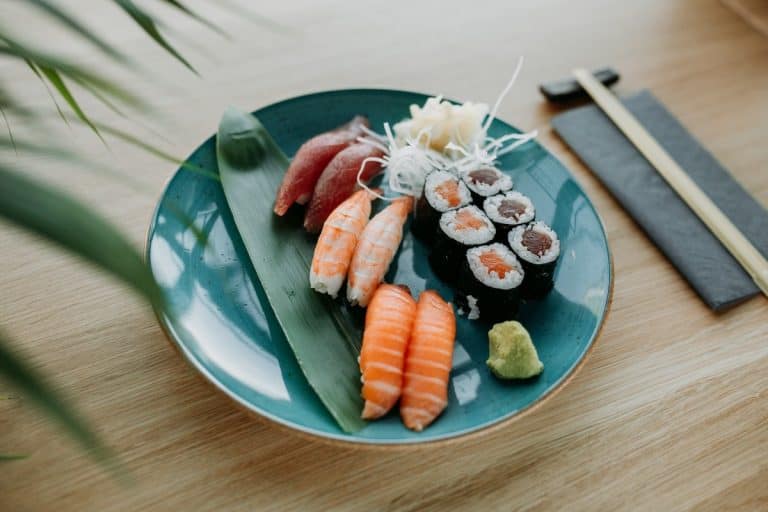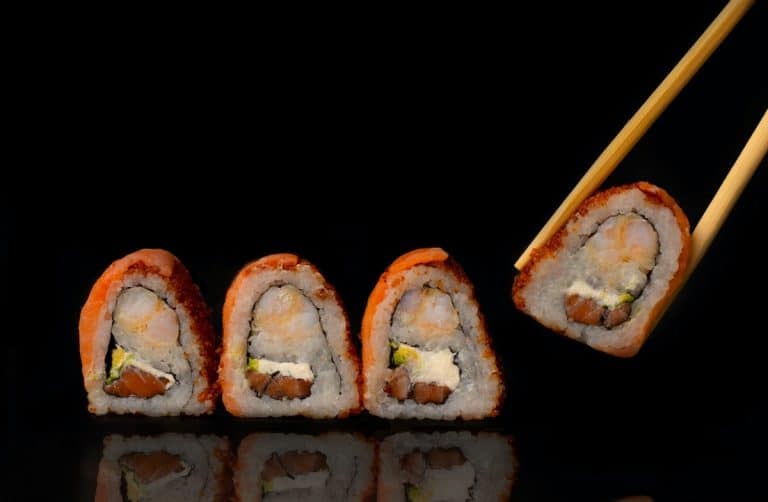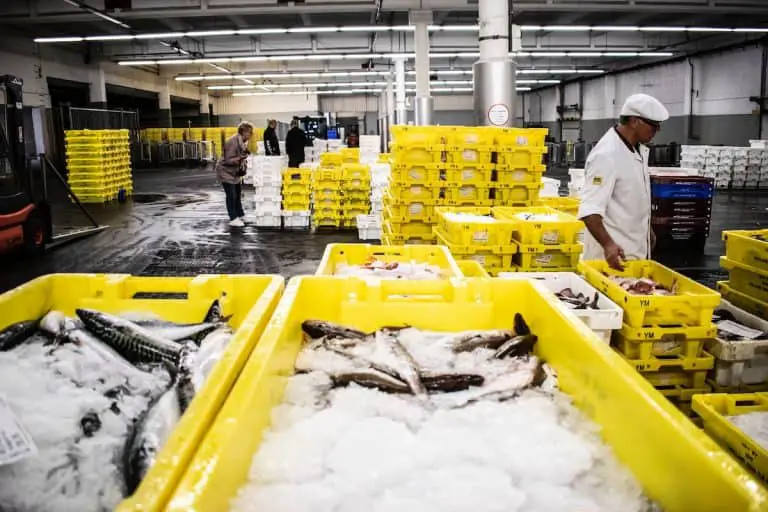Looking over a large menu in a Japanese restaurant or sushi bar can be a little confusing for Japanese cuisine newbies. Especially when you’re trying to figure out to order, it turns into sushi vs sashimi vs nigiri. So what exactly is sashimi?
Many people have heard of sushi before, but not all have heard of sashimi, much less know what it is – there are many that have not tried it before. If the article is to find out what’s the difference between sushi and sashimi, it would be safe to say that they must be quite similar, and many people think they are the same thing.
Both sushi and sashimi are delicious Japanese dishes. But sushi is not actually raw fish like so many people believe it is. The Japanese word sushi translates to “it is sour,” as outlined in our guide on sushi. That’s because sushi is actually the vinegar-and-seasoned rice – and it’s not just any rice either – it’s sushi rice!
The main difference between sashimi and sushi is that sushi always has rice, while sashimi is just raw seafood without any rice.
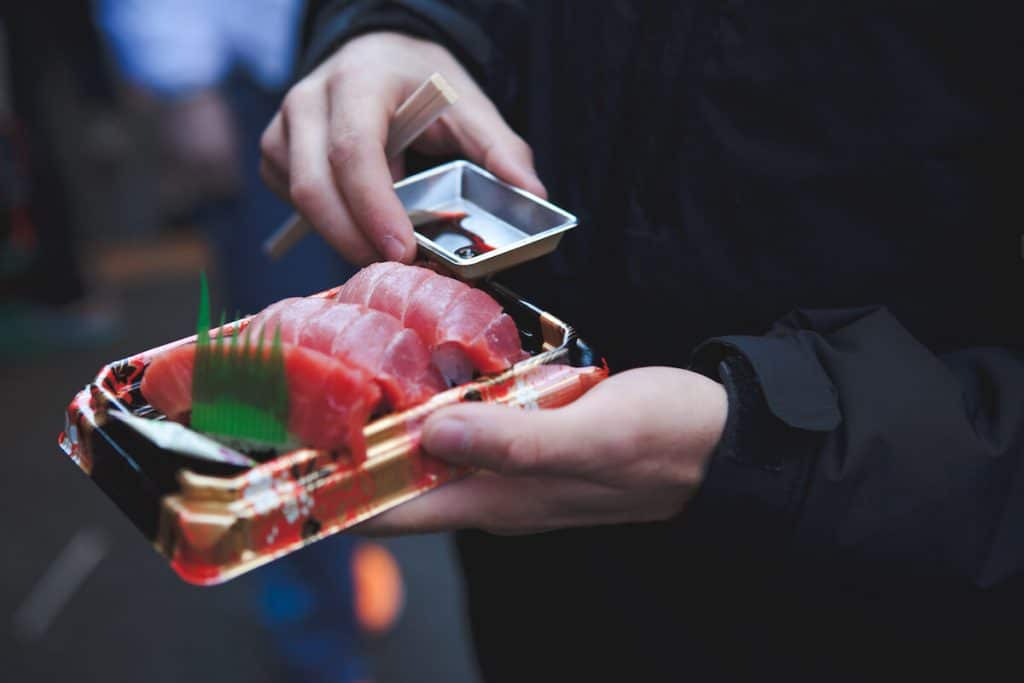
What is sashimi?
One of the biggest differences between sashimi and sushi is that sashimi does not get served with rice. It is served on its own, either as raw fish, or shellfish. Sashimi is raw fish, such as sashimi tuna or sashimi salmon, but other popular fish can be used such as octopus, shrimp, clams, yellowtail, and mackerel. The primary difference from sushi is that it is not served with rice.
Do you know what sashimi means? In English, translated from Japanese, it means “pierced fish.” Now, it’s almost become a term for any thinly sliced meat, served raw with only soy sauce and wasabi as condiments. In effect, when you order a sashimi item off the menu you will receive a plate of very high-quality meat (usually fish) that has been trimmed down of any connective tissues or fat and served chilled and uncooked, along with some wasabi paste.
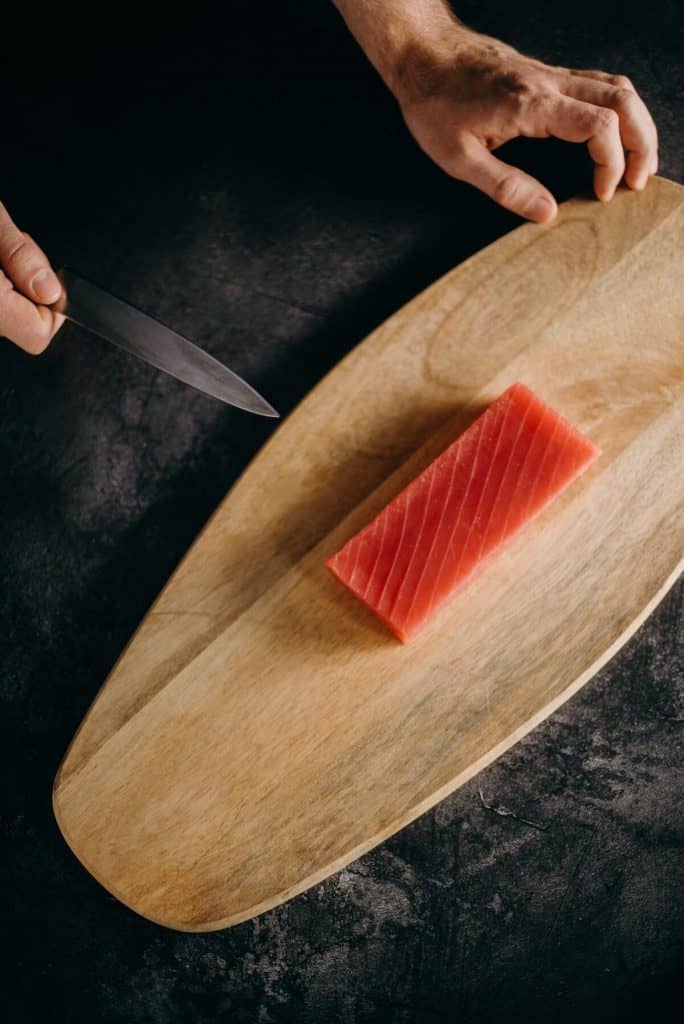
Is sashimi raw meat?
Sashimi is raw fish served without rice. Typically, the highest quality fish is called sushi grade fish because it can be eaten raw.
Some people wonder why if they can eat raw fish, why aren’t other raw meats on the menu. But all the ‘nasties’ found in raw meat are way more harmful to humans than the microorganisms that are found in raw fish.
Mutton, beef, chicken, pork, etc. contain bacteria or parasites that can affect and infect humans. For instance, raw chicken meat contains campylobacter bacteria, which is positively poisonous; also salmonella, which is also poisonous, sometimes deadly. Pork can contain trichinella.
Fortunately, it’s rare in the modern preparation of meat. Sometimes beef is eaten raw, loved by many as “steak tartare”, but you stand the risk of an E.coli infection eating it. And the delectable French “blue” steak is cooked on the outside and is quite raw on the inside – it’s a considered-safe delicacy.
The taste of sashimi
Sashimi is normally eaten towards the start of a meal but can be ordered anytime, even as dessert if you really love it. Usually you’re supposed to just eat it as the sushi chef prepared it. However the way most Westerners enjoy eating it is to pour some soy sauce into a small bowl, add a little wasabi paste, and then using chopsticks, pick up a piece of sashimi, dab it in the soy and then place the piece in their mouth.
A little salt from the soy will bring out the flavors of the meat, enhancing the experience as your mouth rolls the uncooked fish around you begin to feel the texture of the meat that should be smooth but never slimy until you swallow. The aftertaste is where the full flavor comes through, often with a little burst of spice from the wasabi.
For many people, good sashimi is right up there as a delicacy as a good steak or oysters. High-quality produce, if done right is so good that you only have to do minimum preparation or cooking to bring out its flavors. As a consequence, it’s usually only the best seafood that gets put front and center as sashimi.
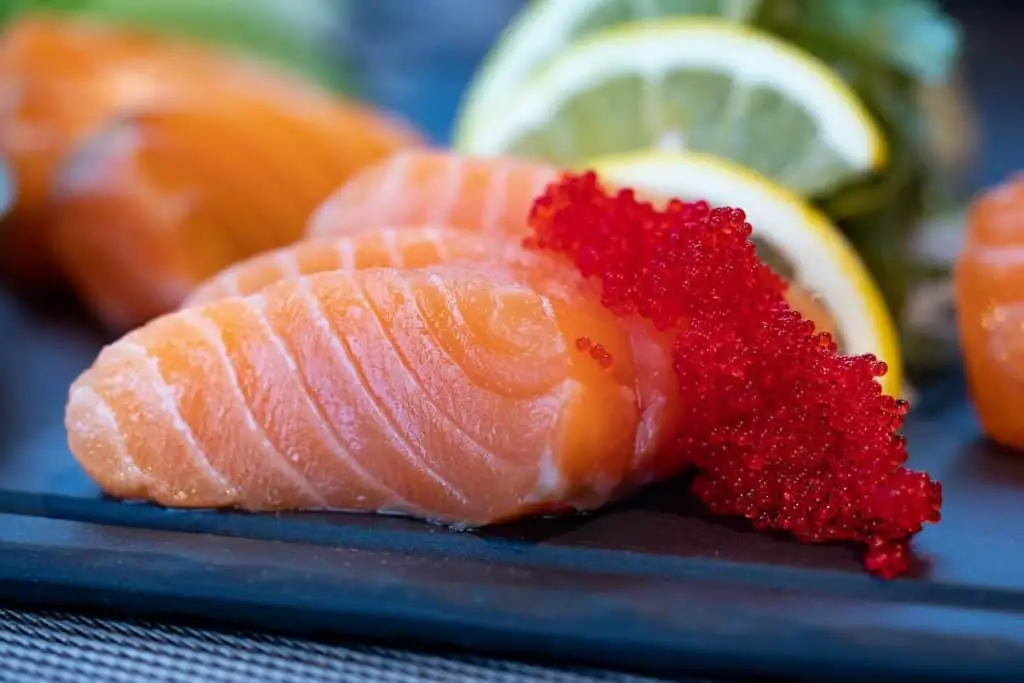
Is sashimi safe to eat?
When it comes to saltwater fish, the risks can be negligible. Sushi and sashimi are often prepared from their frozen state. Freezing the fish kills parasites.
Food and Drug Administration regulations stipulate that fish to be eaten raw — whether as sushi, sashimi, ceviche, or tartare — must be frozen first, to kill parasites. ”I would desperately hope that all the sushi we eat is frozen,” said George Hoskin, a director of the agency’s Office of Seafood.
Source: Julia Moskin, New York Times
Freshwater fish is riskier, as the human constituency can’t always deal with any parasites that are found inside. But of course, the important thing is where the fish comes from; where it was caught. The science behind eating ocean-based fish or freshwater fish is simple – the freshwater fish in the USA do tend to have more parasites. Scientists warn people to exercise caution when they select raw fish for eating because the demand for raw fish is expanding across the globe.
While many different seafood options are listed here as ingredients for sashimi, it’s important that the food is handled and prepared correctly to ensure you or anyone else does not get sick or develops poisoning. If you’re currently wondering if sashimi is healthy, here’s a helpful guide.
We recommend keeping to sustainable sushi options unless you are in a very high-end Japanese restaurant or in Japan itself. Certainly don’t attempt chicken sashimi at home for your next dinner party!
And finally, if you’re have leftover sushi and wondering if it’s still okay to eat, make sure to check out our guide on sushi shelf life.
The proper way to eat sashimi
Well, we will explain to you, according to etiquette, how you eat sashimi. Here are a couple of tips:
- Don’t mix your wasabi into the soy sauce – it is considered poor etiquette. Just take a suitable amount of wasabi with your chopsticks and place it onto the sashimi. Then you may dip your sashimi plus the wasabi into the soy sauce provided and pop it into your mouth in a single bite. Remember that the wasabi is spicy and aromatic, and if you douse it straight away into the soy sauce, the lovely aroma is drowned and you will lose the awesome flavors.
- Remember your sashimi will come to you very thinly sliced in whatever shapes you choose to eat it – the slices could be rectangles, or cubes, or flat slices. This means chefs will use a sharp sashimi knife and have good knife skills when preparing your sashimi. The slices need to look smooth and be visually appealing and mouth-watering. As we said earlier, sashimi is usually served on its own with some beer. But it can be served as a light meal, or a snack, or an appetizer at the start of your dining experience.
- When your sashimi arrives at your table, it will be served on a dish or a platter, sometimes on cauliflower rice or daikon radish or shiso leaves – deliciously seasoned – take your pick. Sometimes the soy sauce or ponzu might be a citrus-flavored sauce.
- To enjoy your sashimi, pick up a piece with your chopsticks. Here is another difference between sushi and sashimi. You are supposed to eat sushi with your hands but sashimi is meant to be eaten using chopsticks. Do you know how to use chopsticks? It is also OK to eat your sashimi with a fork.
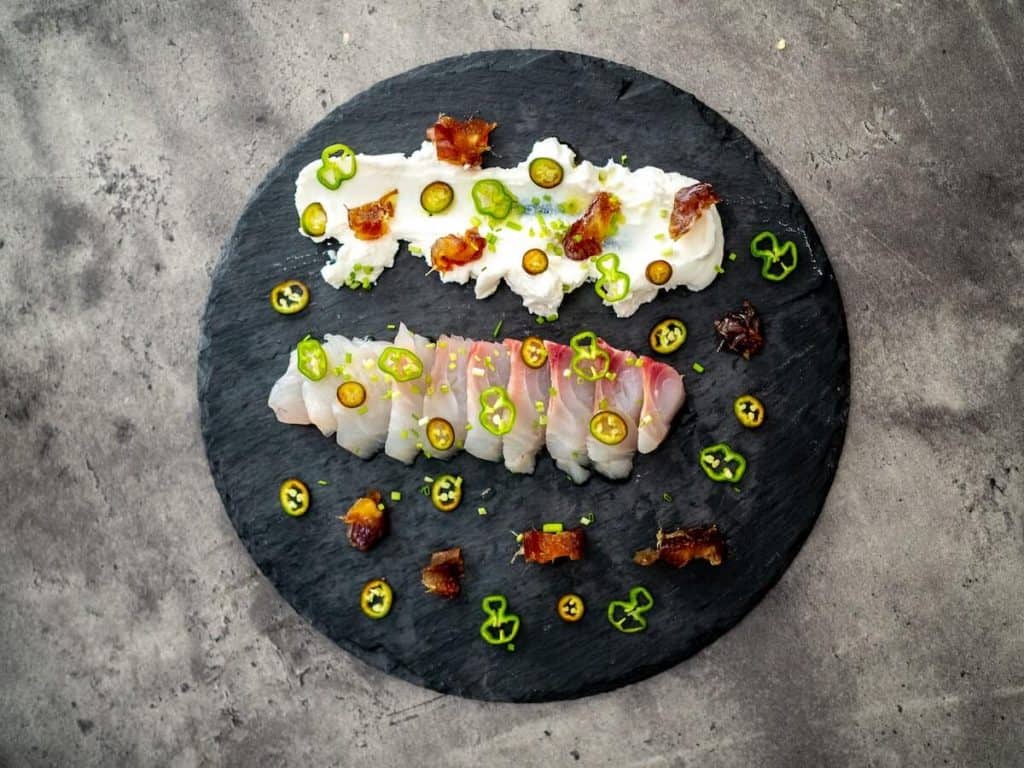
Sashimi vs sushi
Sushi and sashimi sound similar and use similar ingredients. Sushi entered the lexicon years ago having most people think that sushi is just raw fish, but this is not the case. Sushi doesn’t even have to be seafood at all but is made from vinegar rice – which is short-grain rice prepared and cooked with rice wine vinegar, let to cool, and then made by hand into clumps or rolls.
The clumps or rolls are then paired with a piece of seafood, cooked egg, vegetables, pickles, meat, or even fruit. It’s very versatile and new variations are being developed and eaten all around the world as Japanese style meets new ingredients. The California roll comes from the US for example and has made use of crab (or crab sticks) and avocado which is grown locally. This dish is now so popular, it has traveled back to Japan and can be found on many menus there as well.
What are the different types of sushi?
Sushi can come in a variety of forms. The two main types of sushi are maki and nigiri. Maki is what most people think of when the word sushi comes to mind – some fish and pickled vegetables rolled up inside rice and covered with some noki or seaweed. Nigiri is a piece of seafood (sashimi) on top of vinegared rice.
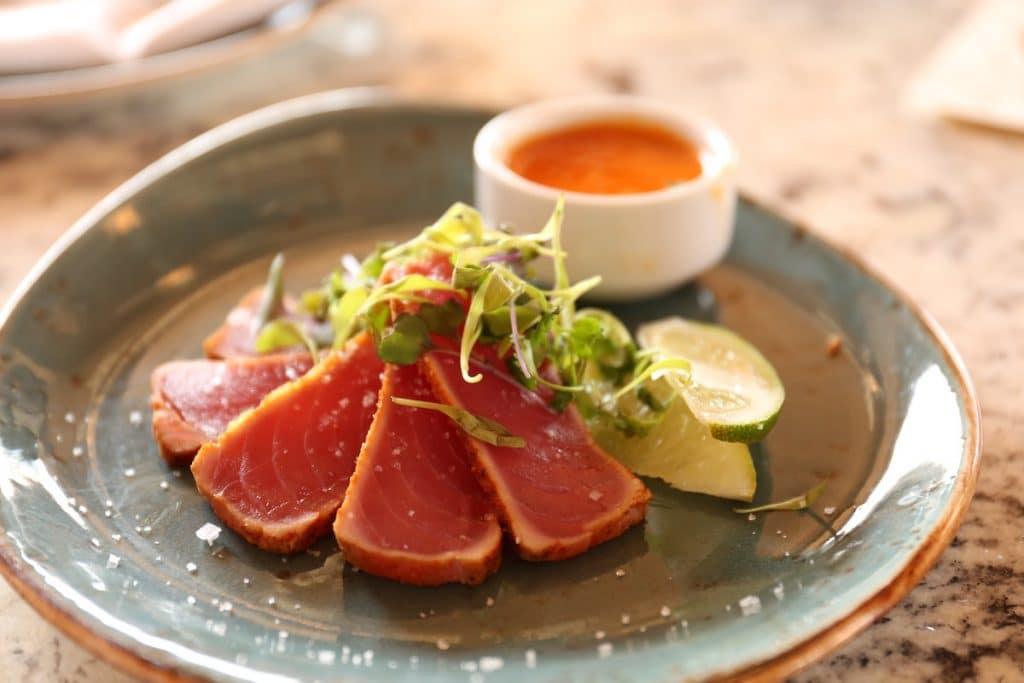 Sashimi sushi
Sashimi sushi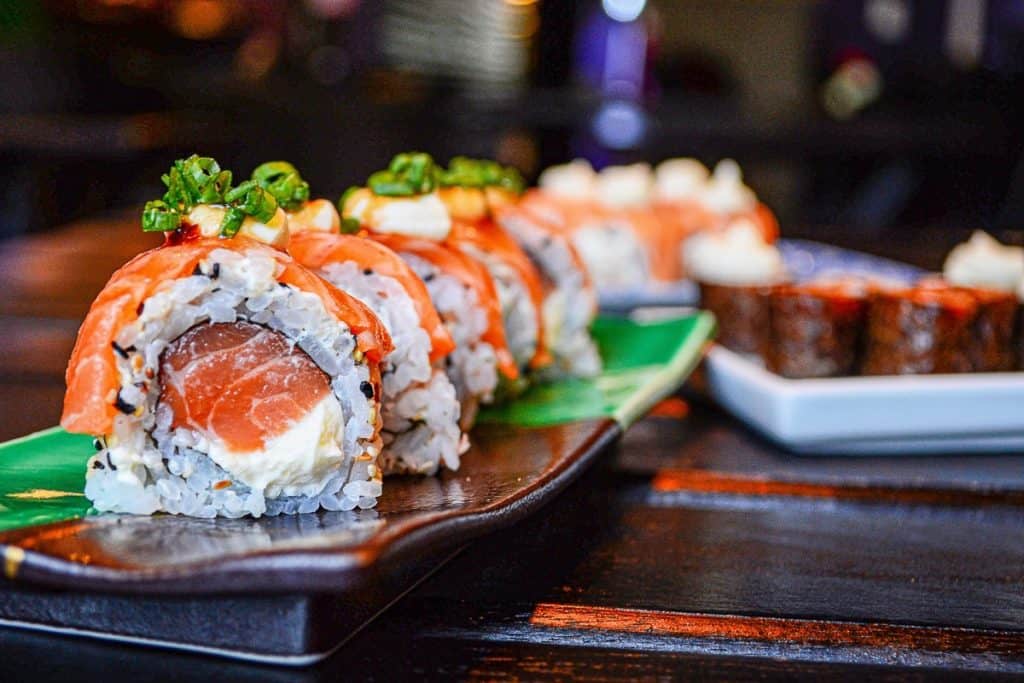 Maki sushi
Maki sushi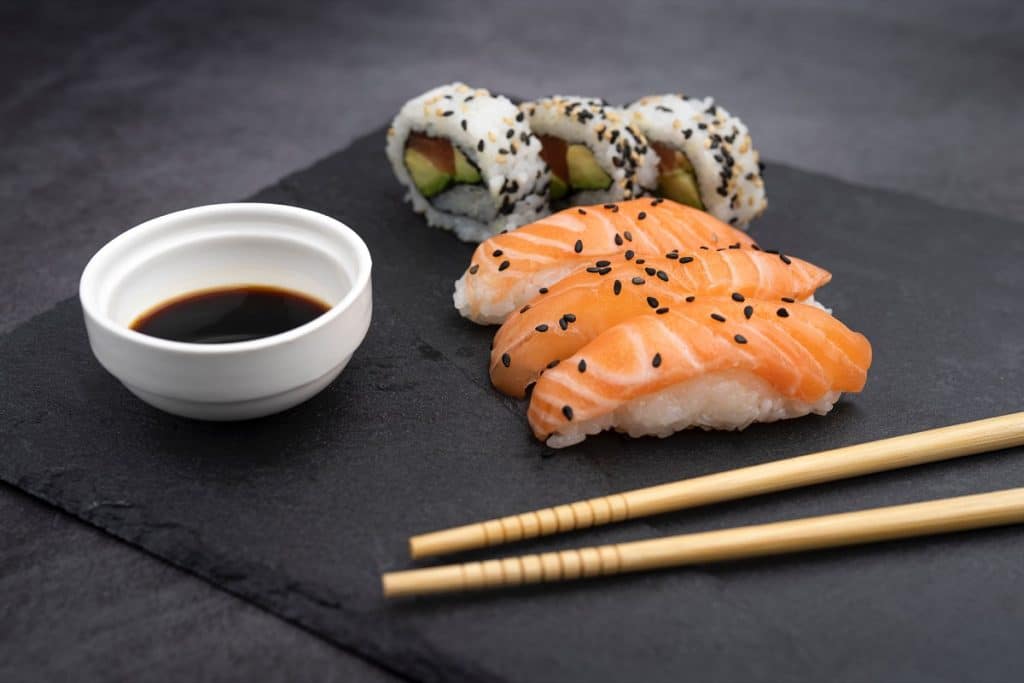 Nigiri sushi and maki sushi
Nigiri sushi and maki sushi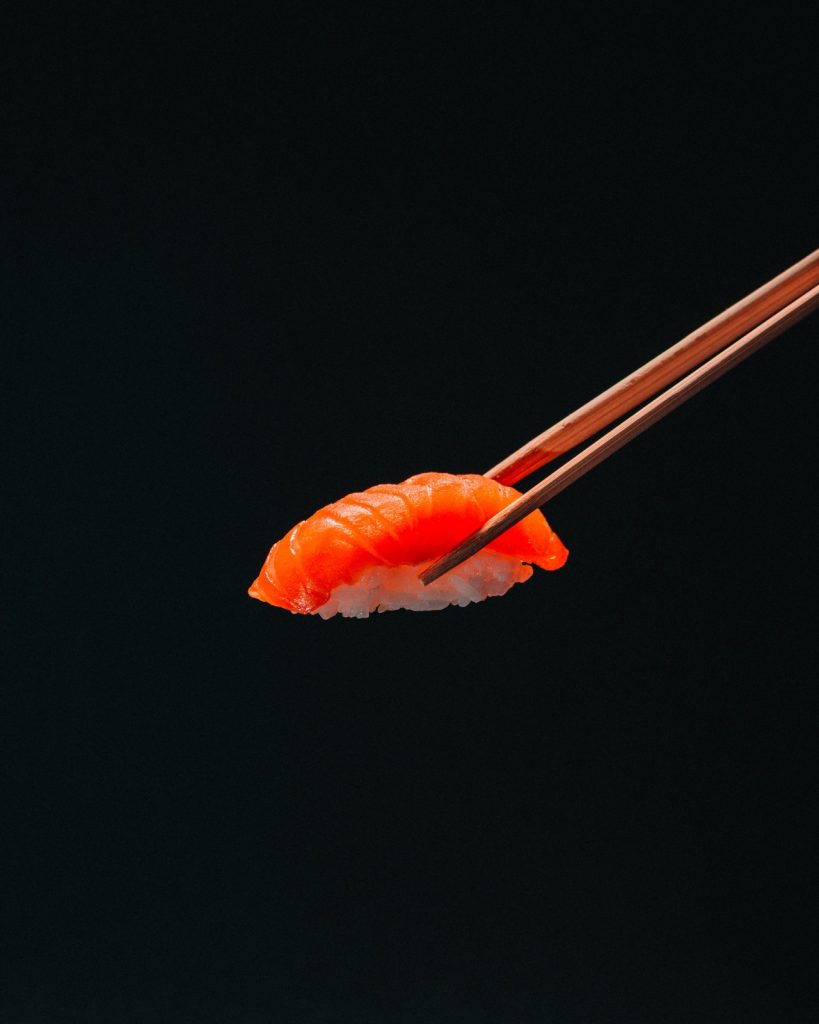 Nigiri sushi
Nigiri sushi
Source: Unsplash
Maki
Maki has an almost infinite amount of possibilities and doesn’t need to stay with raw fish either. Maki rolls are quite common everywhere and it’s something many people love to eat for lunch or even over a beer or two. There are maki rolls made with everything you can think of:
- raw fish
- cooked fish
- smoked fish
- ham (and spam!)
- chicken
- beef
- mussels
- octopus
- sea cucumber
- …and yes, even cream cheese
Some have seaweed, others do not, some have fish roe, others do not – maki rolls are diverse, usually healthy, and balanced as a meal, making them enduringly popular.
Nigiri
Nigiri is a clump of sushi rice with a piece of seafood, usually raw but it doesn’t have to be, draped over the top. So basically nigiri is sushi rice plus sashimi! As people usually see the raw fish first – this is where everything is labeled as sushi originated. While maki rolls try to highlight, but also combine flavors – nigiri lets you focus on just one. There is usually a tiny dot of wasabi between the fish and the rice, along with a quick dip in some soy sauce and this is eaten in one or two bites.
Usually, the same types of higher-end fish or cuts of fish are also used in nigiri that is used in sashimi. So as we can see, the difference between sushi and sashimi is that sushi uses rice where sashimi does not.
There’s no right or wrong way to go when looking at nigiri vs sashimi — but if you’re having a tough time deciding, here are some questions to ask yourself. Are you super hungry? Nigiri the way to go because of the higher calories and more filling nature of rice. Or do you prefer to taste just the fish? Then sashimi is the way to go.
The history of sashimi
The word sashimi is old and dates back to the 1500s in Japan. It is believed it may have originated as an alternative word to ‘cut’ as a culinary technique as the word ‘cut’ was too inauspicious to use by anyone other than a samurai. It may also stem from a practice of piercing or sticking the tail of a fish with the dish to allow the consumer to identify the fish being eaten.
The best parts of the fish were reserved for sashimi, while the rest would go into other types of food. As such, sashimi was reserved for nobility in feudal Japan. Today it stands at the forefront of what fresh, healthy and properly prepared seafood can taste like.

Where is sashimi eaten?
As sashimi originated in Japan, it is still mostly eaten in Japan as the first main course of a meal and often served by itself, its condiment, and a small bowl of miso soup. Pickled ginger and shaved daikon (radish) are often on hand to cleanse your palate before and after the sashimi is eaten.
In Japan, sashimi is very common in eateries as part of a meal but has not traveled quite like its cousin sushi. It is considered as the finest or luxurious part of the meal and is eaten before stronger flavors hit your palate.
Oh and by the way, when in Japan and you are on your way to a sushi and sashimi restaurant, save the aftershave and perfume for another time. It is considered to be quite rude to wear these at sushi and sashimi restaurants, as the strong smells interfere with the delicious and delicate taste of the fish.
Sushi was first introduced to American audiences in the 1960s, but hit a wider audience in the 1980s. Today, sushi is very popular all over the world, with regional variations included, and can be bought from restaurants, bars, supermarkets, and small shops or even homemade. Sashimi on the other hand is not as widely eaten or found around the world to this extent.
Outside of Japan, whether you are in Seattle, Singapore, or Sydney – any good Japanese restaurant or sushi bar anywhere should have sashimi on its menu, as do many decent seafood restaurants, but outside of them, it’s not always an easy find.
While it is conceptually a simple dish, the quality of the fish or meat needs to be high, the best part of the fish needs to be used and the slicing and preparation requires years of training to ensure each mouthful has the perfect balance and taste to it.
What are the most popular sashimi dishes?
There is actually a wide range of foods that can or have been used for sashimi. The two most common and most thought of are sashimi salmon and sashimi tuna and both the lean muscle meat along the back and the fatty belly meat are used for variation.
Squid, shrimp, mackerel, octopus, yellowtail, scallops, fish roe (eggs), and sea urchins (uni) are all used both in Japan and elsewhere in sashimi, along with a list of other fishes with over 50 used in sashimi. Less common but also used are foods like beef tenderloin, beef liver, horse, and goat can be found.
Some meats like chicken that can come with salmonella issues or pork are often cooked first to ensure food safety, while cooked pig face and boiled pig ears are found to be used in Okinawa, an island at the bottom of the Japanese island chain.
Vegetables too can have the sashimi treatment with avocado, bamboo shoots, radish, and tofu skin being prepared and served in a sashimi style.
Lastly, there is the pufferfish, made famous to the West in a classic Simpsons episode. Any fishing guide will tell you to never eat pufferfish as they are poisonous and can easily kill an adult male with its poison called tetrodotoxin.
All parts of the fish that contain poison must be removed during preparation to avoid illness before this fish can be served. It is called fugu and specialty chefs must undergo years of training before they can serve this dish due to the high danger associated.
How sashimi is prepared
Yes, sushi chefs make it look effortless to prepare delicious Japanese dishes, but there’s quite a bit of attention required to have the perfect conditions set for making sashimi. Quality is of utmost importance when it’s all about eating raw seafood or raw meat. And storage is part of this priority. Fish that have a “sashimi-grade” label does not necessarily rank as high quality – retailers can just use the labels as they choose.
Generally, sashimi-grade means that the sellers of the fish confirm that it is safe to eat raw; that the fish has been stored at the correct temperatures to prevent any potential bacteria from growing. There is no government-regulated grading system in the USA for fish.
- Remember to make sure your fish is fresh. Buy the freshest ocean fish you can find. It should come from a trusted market or fishmonger. You can buy a whole fish in some conventional markets – and you can clean it and fillet it yourself. The fish’s eyes should be clear and not cloudy and the gills should be fresh and red-looking.
- Chill or freeze the fish. That’s the only way you will eliminate the risk of parasitic activity in the fish. That is to cook it or freeze it. Keep your fish as cold as you can before preparing it. Leave the frozen fillets in the refrigerator before slicing the fish. Check the fish flesh for worms or larvae that look like grains of rice, and remove them as you go along.
- Sanitize your work surface. Be sure to sanitize all tools that you use to prepare the fish as well as the work surfaces to avoid any cross-contamination.
- Cutting the fish. There are a few slicing techniques when it comes to sashimi; techniques that will require using a very sharp sushi knife. You will carve it crosswise into thin slices.
The harmful effects of sashimi and sushi’s popularity
Due to the incredible growth in global popularity for sashimi and all types of sushi, it has gravely affected marine life. Many of the most popular dishes at sushi restaurants are are tuna sashimi and salmon sashimi. Tuna, especially bluefin tuna, populations are in danger around the world due to overfishing. And since tuna is a top-of-the-foodchain predator it throws the natural habitats out of whack. Sustainable Sushi can help you make better decisions next time you’re at a Japanese sushi restaurant or decide to make sushi at home.
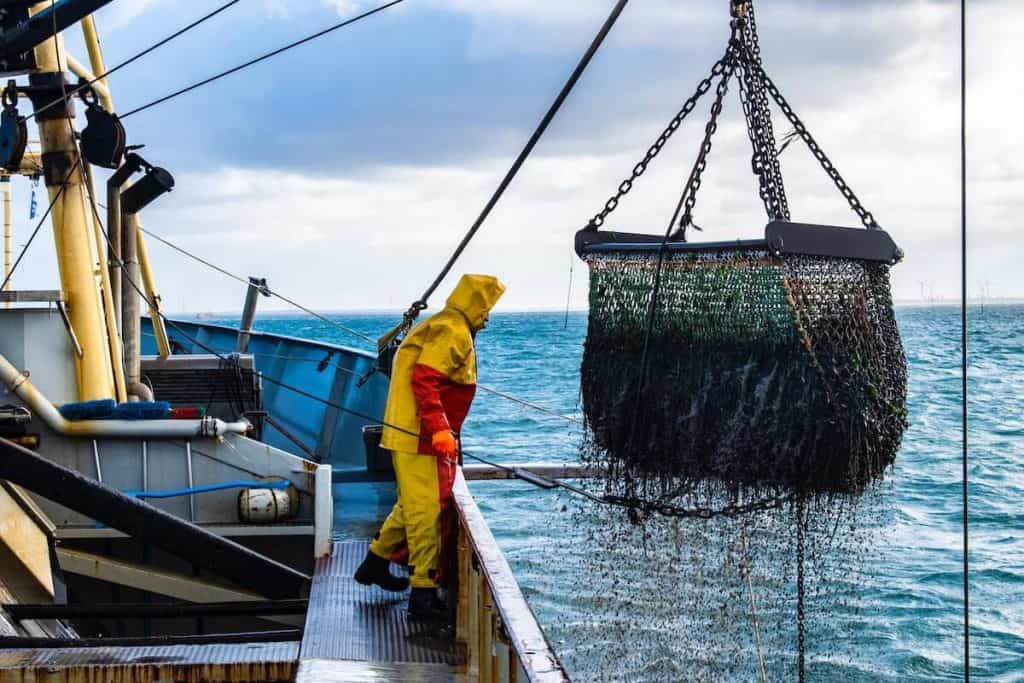
How sashimi sushi is caught and prepared
You may have heard to term sashimi grade fish to refer to the quality of a fish or parts of a fish. Although there is no official grade for sushi, people have this misconception because sashimi only uses the best quality fish and meats prepared the best way.
If you’re squeamish, you will not enjoy this. However, if you’ve enjoyed sushi or sashimi, you should know how your meal ended up there. When fish like a large tuna are caught and the fisherman can tell by its size and appearance if it’s in good health. As soon as it’s caught, a long metal spike is put into the animal’s brain to kill it instantly.
A section of the head is then cut out to expose the top of the backbone. A length of wire is then inserted into the backbone and all the way down, destroying neurons in the process. This thwarts the body’s normal process of realizing it has died and releasing enzymes to start breaking everything down. This spiking is called the ikejime process and stops enzymes and lactic acid from even getting to the flesh, then once chilled it will keep super fresh until eaten.
An experienced chef will then prepare the sashimi with a sashimi knife by trimming all sinews, fats, or skin away from the meat, leaving it very clean. The fish is then sliced in a thick, thin, or square slice with different fishes being cut to different thicknesses to bring out their flavors the best – giving you as the consumer a delicious and elegant-looking plate of food.
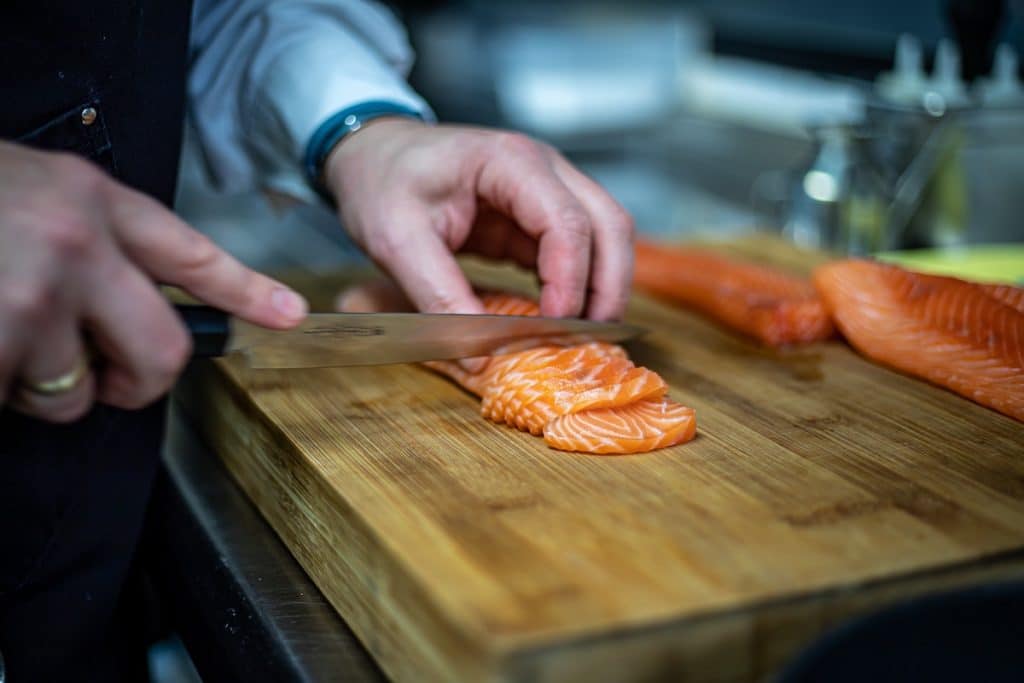
The difference between sashimi and sushi – Conclusion
Sashimi is an exquisite culinary experience that should be loved by foodies everywhere, as it has that Japanese focus on quality ingredients, specific preparation and a dish to be eaten on a clean palate. While raw fish can be a stretch for many people, after eating quality sustainable tuna or salmon sashimi a few times, you won’t want to eat it cooked ever again.
As shown in our article, sashimi has become a popular delicacy all over the world – we have shown you that it is a healthy choice – depending on the right circumstances. It offers plenty of nutrients. Omega-3, a much-needed nutrient and which wards off inflammation in the body, is more highly concentrated in raw fish over sashimi that is cooked.
Unfortunately, like many foods, there is always a downside, and sashimi is no different – it has the risk of bacterial and parasitic contamination. Once again, buying your sashimi from trustworthy sources appears to amount to minimal risk.
Over a 33 year period in the USA, there have been 2,646 reported illnesses and 11 deaths from consuming seafood – not just from raw fish. Even though it is regrettable that there are any figures at all, still, the figures do show that the risk from eating sashimi is relatively low.
If you are thinking about eating sashimi for the first time, maybe the best place for you to start would be with salmon, shrimp, or octopus. It also cannot be denied that sashimi is an absolutely delicious, indulgent, exciting dish, offering several benefits at minimal risk from the Land of the Rising Sun.
But back to the original question – what is the difference between sushi and sashimi? The main difference between sashimi and sushi is that sashimi is just raw fish (or seafood), while sushi features vinegared rice. Once you have tried both, it is going to be difficult for you to decide – which one is it going to be in the battle of sushi vs sashimi?
Both are delicious, and if you are visiting Japan, you would be doing yourself an injustice by leaving and not having tried both of these scrumptious dishes. Otherwise, you haven’t really visited Japan, right?
It might sometimes be a bit confusing to get around the rules of Japanese food, even when it’s just around eating simple slices of delicious raw fish or sticky sushi rice. It’s best to treat the rules as rough guidelines rather than absolute requirements. Remember the top rule is to absolutely love your forays into the world of sashimi because it just heightens your experiences – and almost guarantees that it won’t be your last time to eat delicious sashimi!
Andre Alexander
Andre tried sushi when he was 12 and was hooked. He studied Japanese in high school and was good enough to earn a free trip to Japan… unsurprisingly, he remembers none of it decades later! As a diving enthusiast, he has a deep appreciation for marine life and sustainability efforts.

